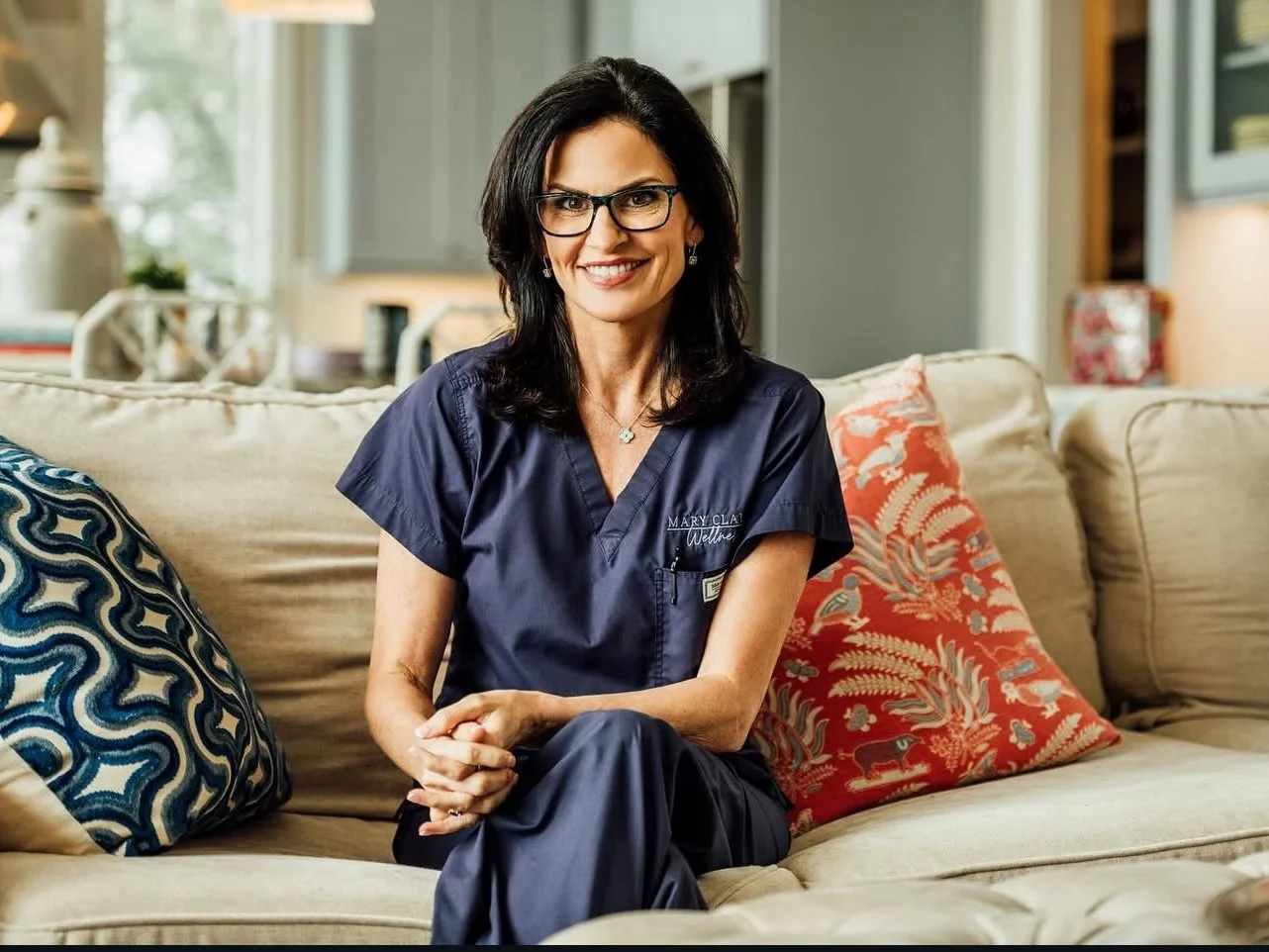Hitting the Pause Button: Why won’t marketers engage with perimenopausal and menopausal women?
Has anyone out here joined the We Do Not Care Club?
I did, way before it was cool.
Enter Melani Sanders. One day, she just decided to put it all out there. She took inventory of all the things, as a perimenopausal woman, she truly could not - no, not even on a good day - care about. She created a post and called it the We Do Not Care Club.
Did it strike a chord? Well, 1.2m followers later (just on IG), I’m going to go with yes. And man, they are funny.
What does the #WDNC Club not care about? Uncomfortable clothes. Unnecessary fuss. Looking for your glasses when they’re on your head. Hot flashes. Mood swings. Bras, simply on principle. Attitude from your kids. People’s expectations of how perimenopausal and menopausal women should act, feel, think, and buy, in spite of the fact that our bodies are going through MASSIVE changes that affect every aspect of our lives.
Is there any wonder we don’t care about many things?
Just how impactful is menopause and perimenopause on a woman’s life?
According to Dr. Mary Claire Haver, MD, probably one of the most vocal doctors in this space, bless her cotton socks, it can cause:
Acid reflux, acne, alcohol intolerance, anxiety, depression, join pain, arthritis, asthma, bloating, weight gain, body odor, brain fog, chronic fatigue, decreased libido, dental problems, difficulty concentrating, dry mouth, dry skin, eczema, fibromyalgia, frozen shoulder, headaches, heart palpitations, changes in cholesterol, hot flashes, incontinence, insulin resistance, IBS, general anger and irritability, itchy skin, kidney stones, memory issues, massive menstrual changes, migraines, muscle aches, osteoporosis, painful intercourse, sleep apnea, thinning hear, TMJ, tinnitus, vaginal dryness, and everyone’s favourite, UTIs.
And it goes on for years.
Here’s what I don’t understand: why do so few marketers think about this? Why is this opportunity to connect with such a massive market so far down the priority list?
How much of an opportunity is there?
As a comparison, let’s look at the furor around GLP-1s. As consumers remap their entire lives around a new body shape, the ripple effect and impact of the medication is life (and consumption) altering. And yes, it’s a big group, with estimates around 12% of the population having used a GLP-1 in their lifetime, which translates to 15 million people (KFF Health Tracking Poll (April 23-May 1, 2024)).
Right now, at this very minute, 42 million women are going through perimenopause or menopause. That’s nearly 3x the market size. And it doesn’t even require a prescription.
What does this transition represent in terms of directly attributable marketing opportunity? Razorfish has done a pretty decent study on this, called MenoMiss (October 2024). They’ve looked at the intent to spend for menopausal and perimenopausal women to against skincare, haircare, travel fashion, diet and exercise. An example stat: over 60% of women surveyed would be willing to spend up to 50% more to meet their changing skincare needs. That’s an additional $11B US spend. Just to feel better.
And don’t get me wrong. There are marketers out there that are addressing these changing needs. Knix is doing strong work here. The MTick campaign that seeks to eliminate opportunistic menopause marketing is GREAT, because, sadly, there’s a lot of meno-washing out there to what is at times a vulnerable, information-starved group.
And it doesn’t take a genius to look at that long list of symptoms and think about the marketing opportunity there.
But that would be missing the point.
The point is: perimenopausal and menopausal women…we just don’t care.
The “Change” applies to brands too.
My theory is that during this time, women change their habits and preferences so completely that brand equity erodes. Google AI tells me it does, although it’s reluctant to give me a data point on it.
But the opportunity for marketers is to extend care – not just sell sh*t.
I had a conversation with a CMO a few months ago. I had a brilliant idea to bridge the information gap for perimenopausal women that could also drie sales to their entire portfolio. She turned it down. It was (still is) brilliant. I am still bitter this didn’t fly. Why did she turn it down?
She turned it down because menopause wasn’t a stated purpose of any of her individual brands.
In a way, she’s right. The only way to get through to perimenopausal and menopausal women is to provide them help, good products, and actually mean it, because they will sniff your BS from miles away.
But in a way, she was so very wrong. She turned down an opportunity to help a massively underserved audience, and that in time would support her brand equity across a strong assortment of products. And, build something lasting beyond her tenure.
So marketers: it’s time to understand the #WDNC Club and understand what makes perimenopausal and menopausal women actually care. And if anyone wants to hear about the idea, which I am still selling, give me a bell.


